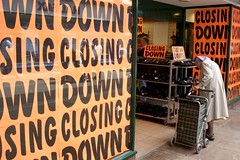When NASA’s Curiosity Rover hit the ground on Mars, it was minutes before we knew its fate (see infographic below). It takes some time for light and data to travel the 35 million miles between Earth and Mars. And yet we sat glued to the streamcast of dozens of people sitting at desks at Mission Control – hanging on every disembodied word from the flight controller – effectively living moments that had already happened.
Meanwhile, across the twitterstream, the @MarsCuriosity account was brimming with enthusiasm and pithy one-liners. One of my favourites is below.
No photo or it didn't happen? Well lookee here, I'm casting a shadow on the ground in Mars' Gale crater #MSL twitter.com/MarsCuriosity/…
— Curiosity Rover (@MarsCuriosity) August 6, 2012
It makes me wonder … why can’t brands adopt social media with such passion and interest? Why can’t they embrace an attitude that engages their audiences?
But it’s not just Twitter that NASA has mastered. They have open sourced their imagery and data – allowing anyone to design their own NASA-focused infographics (aka the social media expert’s tool of choice). After you have created your own infographic, you can then upload it to be shared with the NASA audience – giving you more than just a touch of space nerd celebrity.
At a guess, NASA have followed this path for a strategic reason – to drive a powerful emotional connection with a global, passionate and technically-literate audience. And at some point – around budget time – that audience will be called upon to help sway the thinking of penny-pinching politicians.
And if NASA – can orchestrate this type of sophisticated global engagement program – why can’t brands?
